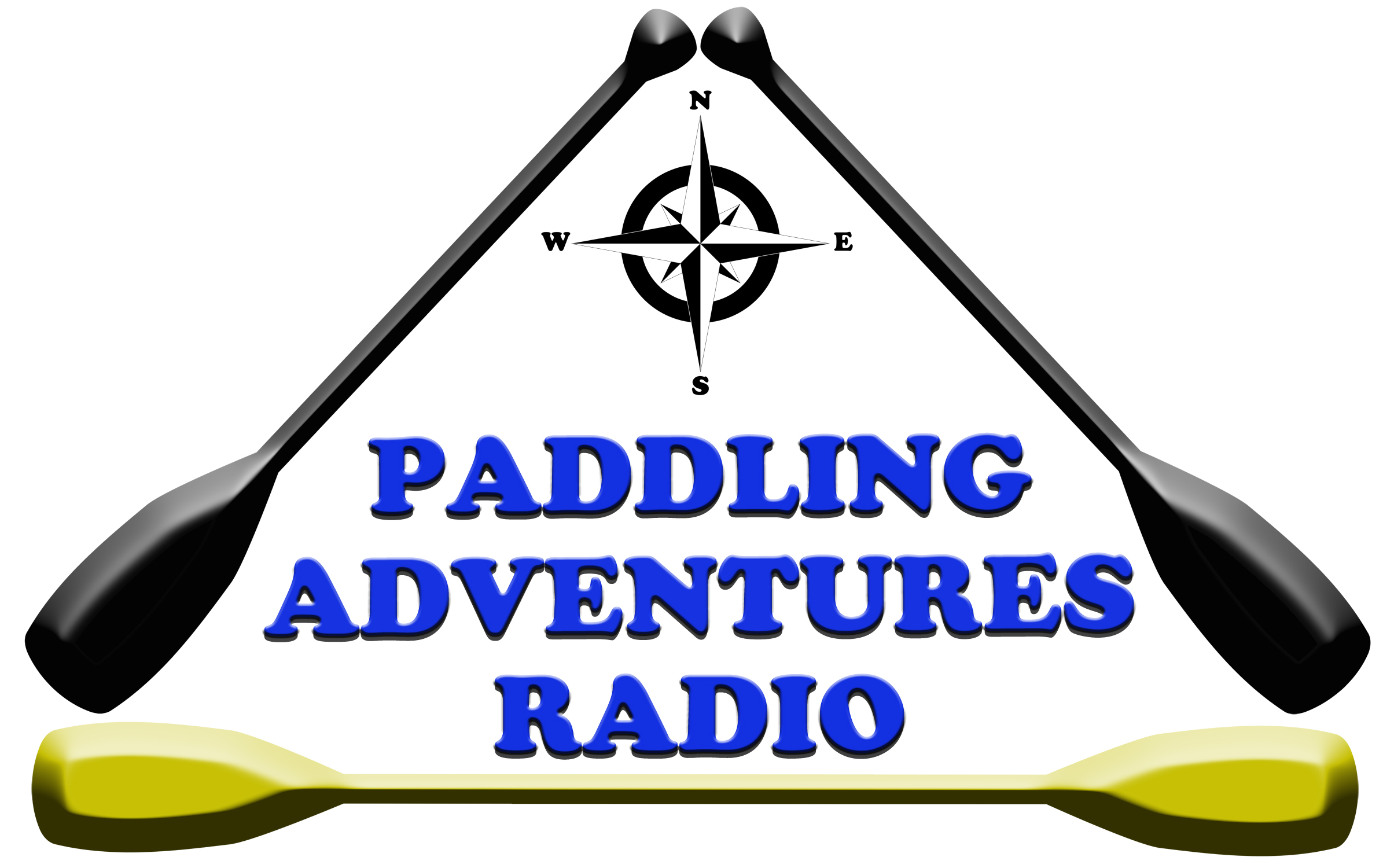Paddling Into The Now

By Leanne Hennessy
“I arose early in the morning while the sun was still pink in the sky, rubbing the sleep from my eyes and stumbling from the tent. Stepping out onto the pink granite rock shelf hugging the shoreline of Georgian Bay around Hincks’s Island, the cool breeze caressed my face. I closed my eyes and smiled. I took a long, deep breath in. The day was still fresh and new, but it was going to be a hot one, I could tell, as the sun began to rise high into the sky and heat the land. The water was gently crashing into the rocks, with a rhythmic lull that mesmerized me, and I watched as the birds flew effortlessly, gracefully, dipping here and there over the water against a backdrop of an endless, blue sky. I observed the rocky cliffs across the way, standing steadfast and resolute as they have for millennia, unchanging, and wondered about the generations of people who had paddled this route before me, holding their hopes and dreams in their hearts and in their paddles. Suddenly, I knew that I had been part of this story. I WAS this story. I AM this story.
It occurred to me – there was nothing I needed to do, right here and right now, except to bask in the morning sun and in the perfection of this moment. All there was to do was just to BE – in this story, in this beauty unfolding before my eyes. I took another deep breath in. My busy to-do list faded into the background, the tension eased from my shoulders, and slowly my mind cleared like ripples settling into stillness across a pond after a stone had been tossed.”

——–
We all know the many benefits of spending time in nature for our mental health. A quick search of the internet will reveal literally thousands of articles and studies on the subject. Even just viewing pictures of nature can induce some of the same beneficial rewards as actually being out there, such as increased positivity and emotional stability (no, this is not condoning the continuous scrolling of your social media feeds!)You’ve likely read many of these articles, and have your own lived experience to share about how being in nature has healed you, saved you, maybe helped you to bring balance and peacefulness to your life, or maybe deepened and strengthened relationships to the important people in your life.
We know that being in nature may help to relieve and release difficult emotions such as anger, depression, anxiety, and stress. When we are able to release these emotions, there are corresponding beneficial physiological effects on our body – reduced blood pressure, heart rate, muscle tension, and reduced production of stress hormones – the fight or flight response – all of which will make us feel healthier, live longer, and become better able to react to future stress in more constructive ways.
Time spent in nature is also proving to be awesome medicine for veterans, inner city at-risk youth, and others suffering from Post-Traumatic Stress Disorder. Studies are revealing that there is a marked improvement in health and well-being following time spent in nature for these groups. In some countries, doctors are now actually prescribing spending time in nature as a therapeutic treatment option.


We also know that time spent in nature can:
- increase the quality of our sleep and help to reset melatonin levels and our circadian rhythms;
- give our eyes a break from constant screen time, and work the muscles in our eyes that help to focus on far away objects;
- increase creativity;
- help us to connect with family and friends and build stronger relationships;
- help us to connect in a more fundamental way to our inner self, our true nature – some may call this our spirit or soul; and
- help us to learn to be present in the moment, to be mindful, to come into the Now.
Here’s the thing – being in nature helps us to slow down. We can take a break from the incessant demands of everyday life and quiet the endless chatter that goes on in our minds, most of the time without us even being fully aware of it. Without knowing or being able to label it, when we are paddling across a quiet lake, when we are sitting around a campfire, when we are preparing a meal in the backcountry, we are practicing mindfulness.
MINDFULNESS
Noun
- the quality or state of being conscious or aware of something
- a mental state achieved by focusing one’s awareness on the present moment, while calmly acknowledging and accepting one’s feelings, thoughts, and bodily sensations
When we are mindful, we are free to see things as they really are, uncluttered by emotions and thoughts. We can notice little details we’ve never noticed before; we can rediscover a sense of peace and enjoyment; we can feel truly enchanted by life again.
When we practice mindfulness, we can realize that the future and past that we spend so much time thinking and worrying about, do not really exist in this moment. The future and the past are THOUGHTS. And we are always free to choose and control our thoughts, to choose to quiet the mind, and to exist in the Now.
——–
“We broke camp on West Fox Island at sunrise. The best time to paddle the open waters of Georgian Bay, we found, was either early in the morning, or late in the afternoon/early evening. Inevitably, the winds always seemed to pick up in the afternoon, sometimes even raising whitecaps, making travel by canoe treacherous. Heading out onto the water, we passed Martin Island, coming around a point from the southwest, and saw a man walking along the water’s edge enjoying the morning sun. He was wrapped in a big purple towel, and was oblivious to our presence; the wind did not carry the sound of our paddles slicing the water to him. We saw him reach down across his waist. No, don’t do it, my paddling partner softly whispered. And then, with a grand flourish, the towel snapped free. With huge smiles on our faces, my partner and I yelled out loudly, Goooooood Morning! A small white bum was quickly covered up as we giggled and waved. The man waved back, with the purple towel now firmly wrapped around his waist once again.
We continued paddling to the next island and got out to explore. As we walked up toward the top of the island, a tiny, dive bombing, shrieking missile began to attack us. We quickly identified it as a falcon, as it squawked at us and tried to make itself look big. We looked around and saw a nest in the tallest tree about 50 metres in front of us, and decided to turn around and head back down to the water’s edge before we lost a limb or an eye. Sitting on some large flat rocks, we paused here for a drink and a snack. I noticed that the trees and bushes on these islands seemed to live a precarious existence. Their roots cannot grow deep into these glacial rocks; instead, they spread out wide, finding shallow pockets of soil just inches deep, and take hold here. As they grow, they appear to twist this way and that, growing into the sun and turning away from the worst of the winds. A strong wind could easily uproot them, exposing the fragility of their root system, and yet, stubbornly, tenaciously, they cling to life. Their branches still reach to the sun. They grow and thrive despite the difficult conditions.

A dark brown marten suddenly scampered across the rock not ten feet in front of us. It scurried down to the water’s edge, and disappeared into some bushes. A few minutes later, it appeared again, and made the same circular pattern across the landscape, like a trapper checking his line. It was not at all concerned about our presence as it went about its marten business. Snapping grasshoppers, half jumping and half flying, filled the air around us as we got back into our canoe.
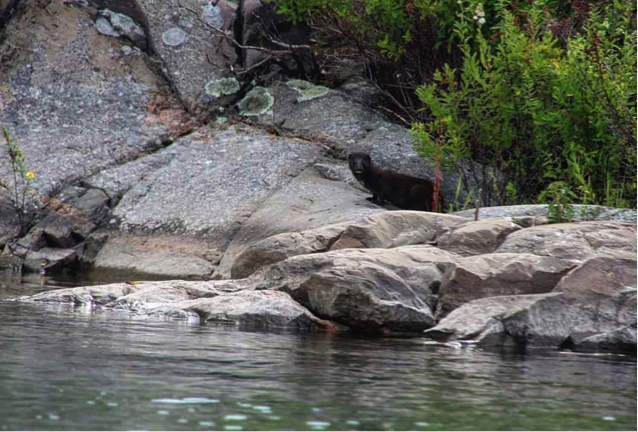
It occurred to me – for the last four hours or so, I had not once thought of what was going on at work and what I might return to. I had not once thought of the difficult time I was going through in my relationship with my sister. I had simply been present in the unfolding of each moment as it presented itself out here on the water and on the islands, astonished by the absolute perfection of it all. Laughing. Noticing. Observing. I felt free.”
——–
There are two main types of mindfulness practices: Meditation, and Yoga. You have most likely heard of both of these and have maybe even tried them. Perhaps there is a yoga studio near your home that you’ve practiced at; perhaps you’ve dabbled in meditation or have a regular habit.
Meditation is simply a practice. We call it a practice, because just like exercising a muscle that you’ve never really worked out before, it takes consistent practice to get comfortable. In its simplest form, when we meditate, we bring awareness to the present moment in a focused way. You may sit, or lay down, or even walk on a trail, and meditate. There are literally hundreds of ways to meditate, and to describe them all here is beyond the scope of this article.
Yoga is a Sanskrit word meaning to yoke, to unite. So we think of yoga as the union of the body through movement (asanas, the poses), the mind through mindfulness practices (meditation), and our breath (pranyama practices).
In both of these practices, perfection is not the goal. It’s one of those things where the journey is more important than the destination. In both yoga and meditation, the monkey mind will chatter. That’s normal; our human brain and consciousness has evolved this way, giving us the ability to think and self-reflect. As you begin to practice mindfulness techniques, know that:
- There’s no way to completely quiet your mind. That’s not even the goal here, as it is impossible. All that is necessary is to bring awareness to the present moment, again and again.
- Your mind will wander. Guaranteed. When you become aware that your mind has wandered into a thought or emotion, or you become aware of a physical sensation in your body or the environment around you, simply return your awareness back to the present moment.
- Your judgy brain will try to take over. Don’t let it. Without judgement or criticism, simply return to the present moment.
It seems obvious that these mindfulness practices we do at home and in our daily lives would pair perfectly with our paddling adventures. They can easily be taken into the backcountry with us; they require no additional gear. Whether we canoe, kayak, packraft, or SUP, paddling into the backcountry allows us to put physical and mental distance between our busy, hectic, ramped up lives and the stillness we are seeking in our minds. We can find a quiet, still place at the edge of the lake on that perfect rock as the sun sets and meditate. We can practice Virabhadrasana at sunrise, channeling our inner Warrior, moving our bodies to the sound of the waves and the call of the loons. We can be present in each moment. We can paddle into the Now.
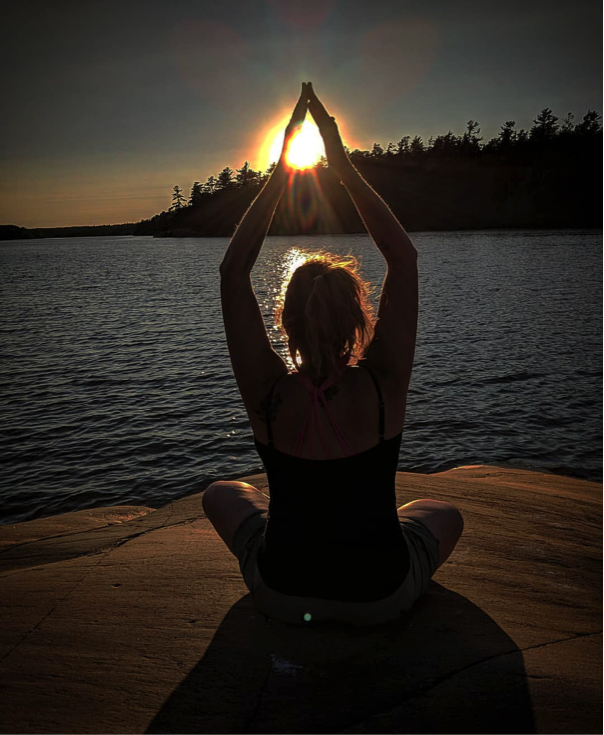
——–
“The evening sun was warm as it began to sink behind me in Collins Inlet, casting a long shadow onto the flat rock that had become my yoga mat. I moved my body into the shape of Warrior 1. Knee over ankle. Hips square. Arms overhead. Standing tall and strong. I stared out at the deep blue water before me, and for the first time, I began to feel the significance of this pose in a way that I had not been able to before in the studio. A story began to tell itself in my mind – the story of The Warrior. She turns her face to the wind and shines her courageous heart forward. Her body is strong and she is rooted deep into the earth. She knows in the coming days she will be tested. She knows there is a storm coming and she knows what she must do. She must turn to face this storm head on. With steadfast determination, she must look it in the eye. She must feel the fear in the very core of her being. She must feel it tingling in her very cells and molecules with every inhale and exhale, and with every beat of her heart. And then, when she feels that she cannot bear it one more second, she releases it. She lets go. She allows it to move through her just as the wind whistles around her body and wraps her hair in a tangled mess around her face. There is no turning away. The fear is the way. The Warrior knows that it is in the journey that she gains her strength and courage. She is no longer afraid.
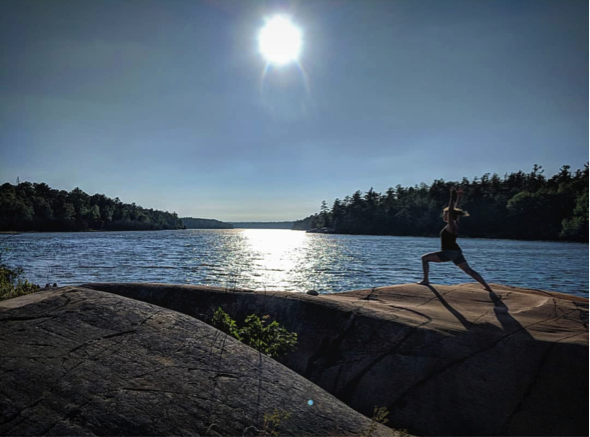
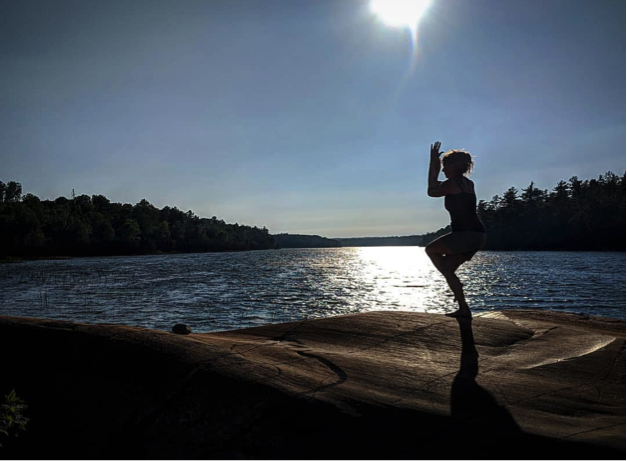
The Warrior Story moved me, and it occurred to me – that paddling through these stunning islands, in and around Philip Edward Island in Georgian Bay, had brought me over and over again back to the present moment, and back to myself, in so many ways. Maybe it was the windswept pines and rugged shorelines; maybe it was the islands polished smooth by the battering of waves over millennia. Maybe it was that time did not intrude into the mind here; the only thing that dictated my movements was the wind and the yearnings of my wandering spirit. How wonderful and weird it really all was, I thought, that the activity of glaciers tens of thousands of years ago, exposing the pink granite bedrock that formed the over thirty thousand islands here, and filling the spaces in between with crystal clear water, had culminated in this moment, right now, where in my brief passage through this universe, I was here. Paddling into the Now.”
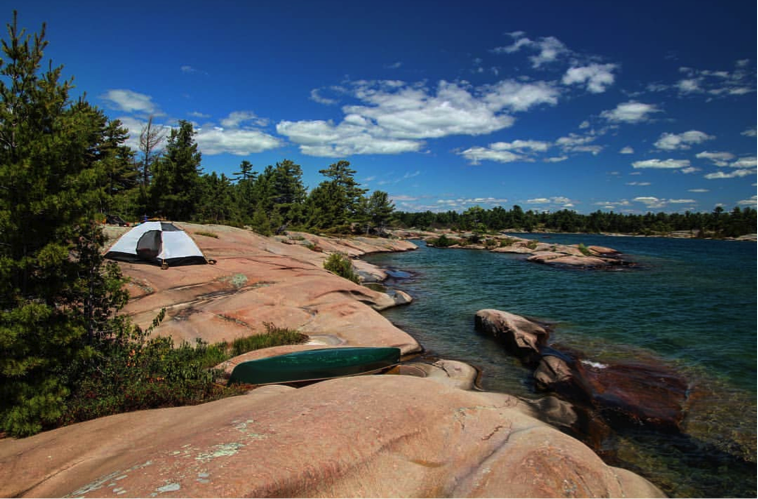
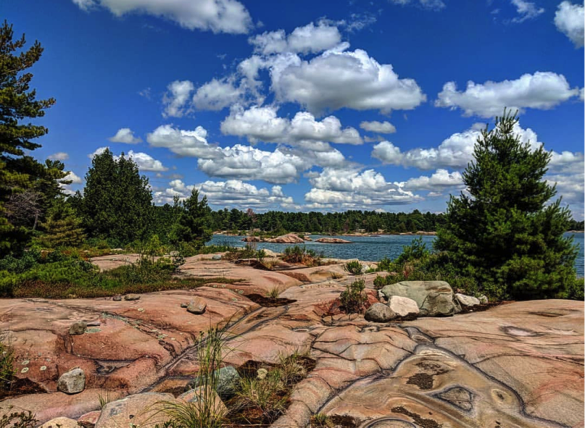
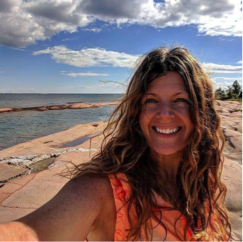
Leanne Hennessy is an avid paddler and hiker, as well as a Yoga Instructor. She lives for time on the yoga mat and the next big adventure! Her next goal is a thru-hike of the Appalachian Trail in 2020.
Follow Leanne on Facebook at Live Love get Outside and on Instagram at Live Love Breathe Yoga.
